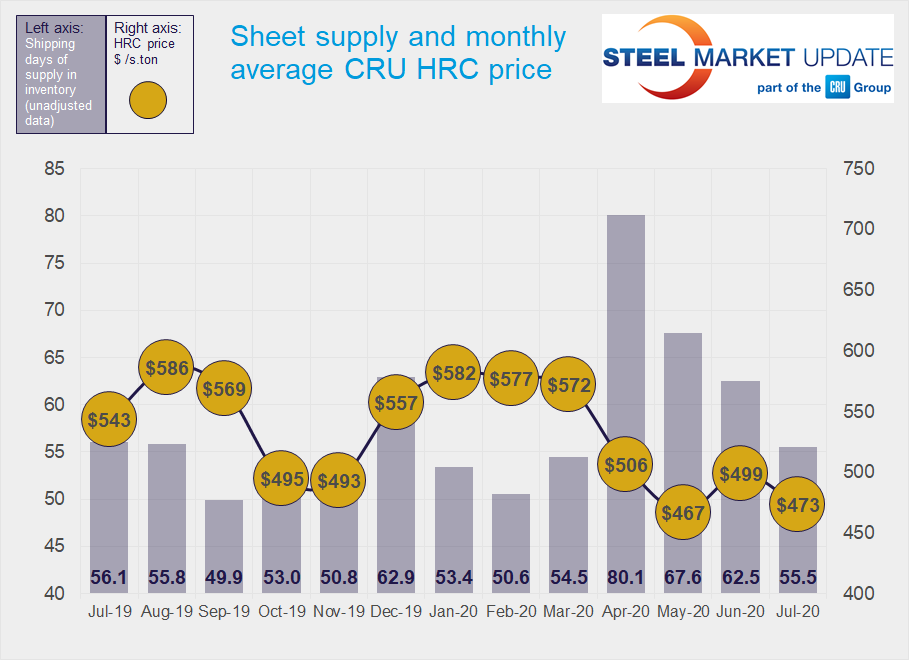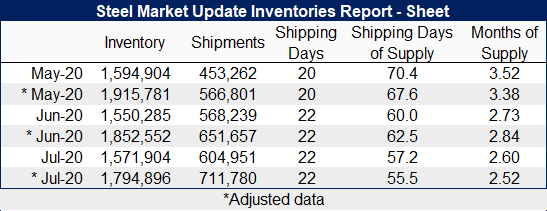SMU Data and Models

Service Center Shipments and Inventories Report for July
Written by Estelle Tran
August 17, 2020
Flat Rolled = 55.5 Shipping Days of Supply
Plate = 54.7 Shipping Days of Supply
Flat Rolled
Service centers pared down flat-rolled steel supply in July to 55.5 shipping days of supply, according to preliminary data, down from 62.5 in June’s adjusted data. Inventories represented 2.52 months of supply in July, down from 2.84 in June. July had 22 shipping days, the same as June.
Shipments in July increased 9.2 percent month on month, and some service centers have reported normal business levels.
Total volumes of flat roll on order increased 6.1 percent at the end of July, and the percentage of inventory on order was the highest level reached since February. The percentage of inventory committed to contract was 52.9 percent in July, up from 50.7 in June.


Plate
Service centers cut back plate inventories 3.9 percent in July, while shipments picked up 3.2 percent. Overall, supply dropped to 54.7 shipping days of supply in July from 58.7 in June. Service centers carried 2.49 months of plate supply at the end of July, down from 2.67 in June.
Plate shipments remain subdued, though close to year-ago levels. Buying picked up significantly in July as mills eased off of their announced price increases. On-order volumes increased 13.7 percent month on month. As a percentage of inventory and total tonnage, plate on order was at the highest level seen since February. With inventories at just around 2.5 months of supply and some mill shipments running behind, service centers came back to the market to fill holes in their inventories, and also because mills had cut deals in the last month.


Estelle Tran
Read more from Estelle TranLatest in SMU Data and Models

SMU’s June at a glance
A look at SMU data for the month of June.

SMU Survey: Buyers’ Sentiment rebounds from multi-year low
Both of SMU’s Steel Buyers’ Sentiment Indices edged higher this week. Current Sentiment rebounded from a near five-year low, while Future Sentiment rose to a two-month high

SMU flat-rolled market survey results now available
SMU’s latest steel buyers market survey results are now available on our website to all premium members.

SMU Survey: Sheet lead times pull back after early-June blip, plate holds
Following the uptick seen two weeks ago, lead times eased this week for all four sheet products tracked by SMU, while plate lead times held steady, according to this week’s market survey.

SMU Survey: Pricing power abruptly shifts to steel buyers
The majority of steel buyers responding to our latest market survey say domestic mills are more willing to talk price on sheet and plate products than they were earlier this month. Sheet negotiation rates rebounded across the board compared to early June, while our plate negotiation rate hit a full 100%.
